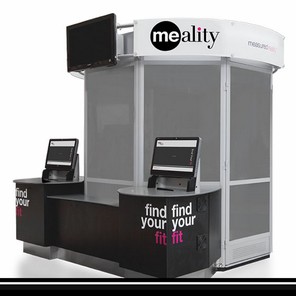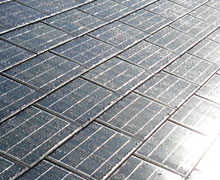March 25, 2015 – Today’s guest blogger is Rebecca Hasulak,a prolific writer and dangerous dreamer. She is a former Associate Editor for a beauty and pop culture magazine, and has a background in public relations. Rebecca owns her own business, Quotable PR, providing writing and public relations services to others. She is thrilled to have her daughter and loves ones follow her on Twitter at @BecksChristine. Her topic today is about the impact of disruptive technologies on traditional business models. She’s picked three examples which you may find quite interesting. Let me know what you think of Rebecca’s contribution to 21st Century Tech blog.
————-
When we think about technology, it’s often in the context of today. Wee have visions of smartphones and laptops and we comment about how quickly technology is surging ahead. But influential technology isn’t limited to software systems and digital tools. In fact, many age-old industries have benefited greatly from technology’s impact. Read on to look at a few you may have never considered.
Roofing
Humanity has been constructing buildings and homes since we first moved out of caves. The practices handed down from generation to generation, have proven to be reliable and seem to change with glacial slowness. After all, we still see plenty of buildings built in ancient times still standing, architecturally sound and fundamentally solid. But the truth is that many elements of construction have made great strides, in particular, roofing.
Roof shingles have been made out of a variety of materials for as long as they’ve been in existence, ranging from wood shakes to slate, to metal, and beyond. But they haven’t always been up to snuff with plenty of them unable to withstand storms or severe weather. Thanks to technological improvements even traditional roofing materials have been improved upon. Now clay, asphalt, shakes and other shingle materials are far more durable, made to hold up against the elements and decades of exposure to sun, wind, rain and snow. Because of this, leaks are fewer and roofs don’t have to be replaced as frequently.
Today’s asphalt roofing shingles, the ones most commonly found on homes in temperate and mid-latitude climates, have a life span ranging between 25 and 30 years. They are usually covered by manufacturer’s warranty for the lifetime of the product. Joining asphalt are a variety of new roofing options including polymer membranes, spray on foam sealants, green roofs, and solar energy shingles (see image below), the latter capable of generating power to the home in off-grid areas.
Textiles
The textile industry hasn’t changed much since the dawn of the Industrial Revolution when it moved from cottage industry production to the factory floor. In the beginning clothes were made by hand. Fabric was created, cut, and sewn piece by piece. As industrialization took hold textiles were mass-produced. But this isn’t where the technology reached its limits.
Today we are seeing an entirely new disruptive change to the clothing industry. One is wearable technology. It isn’t just a smart watch anymore, but smart clothes. Shirts that allow a fan to experience what players feel during a game. Biometric smartwear that tracks your daily caloric burn, pulse rate, body temperature and other health statistics.
Add to this instant custom-made clothing from disruptive innovators like Me-Ality and its Me-ID sizing engine (see the image below of Bloomingdale’s MeID Size-Matching station). Using advanced algorithms everyone can have a MeID online profile ensuring that clothing they buy is almost always a perfect fit. The technology includes a database with over 200 billion dimensional points and applies 5 layers of analytics in helping to select the right clothes for the customer. Within 10 seconds it creates a personalized MeID that provides best clothing matches by brand, style, SKU, fabric and color. for Imagine ending the endless trial of trying on garments to get the size and style right. With MeID all that goes away.
Voting
We don’t often think of the electoral process as an industry but in fact it is and one beginning to go through a significant paradigm shift. Since humans started electing leaders the method of voting has gone from a show of hands in a public display of support to private ballot. In Canada ballots are still counted by hand. In the United States various states have experimented with electronic voting with a range of successes and failures (remember the dimpled chads in the 2000 presidential election?)
Brazil, however, since 2012 has taken voting technology to the next stage. In 762 of its recent municipal elections 21.6 million people voted using biometric electronic voting machines. Voters were recognized by fingerprint identification which allowed the electors to verify their right to vote in the particular municipality and registered their vote without disclosing to those overseeing the process, who they voted for. The method is proving an effective means of reducing electoral fraud and errors in counts.


















